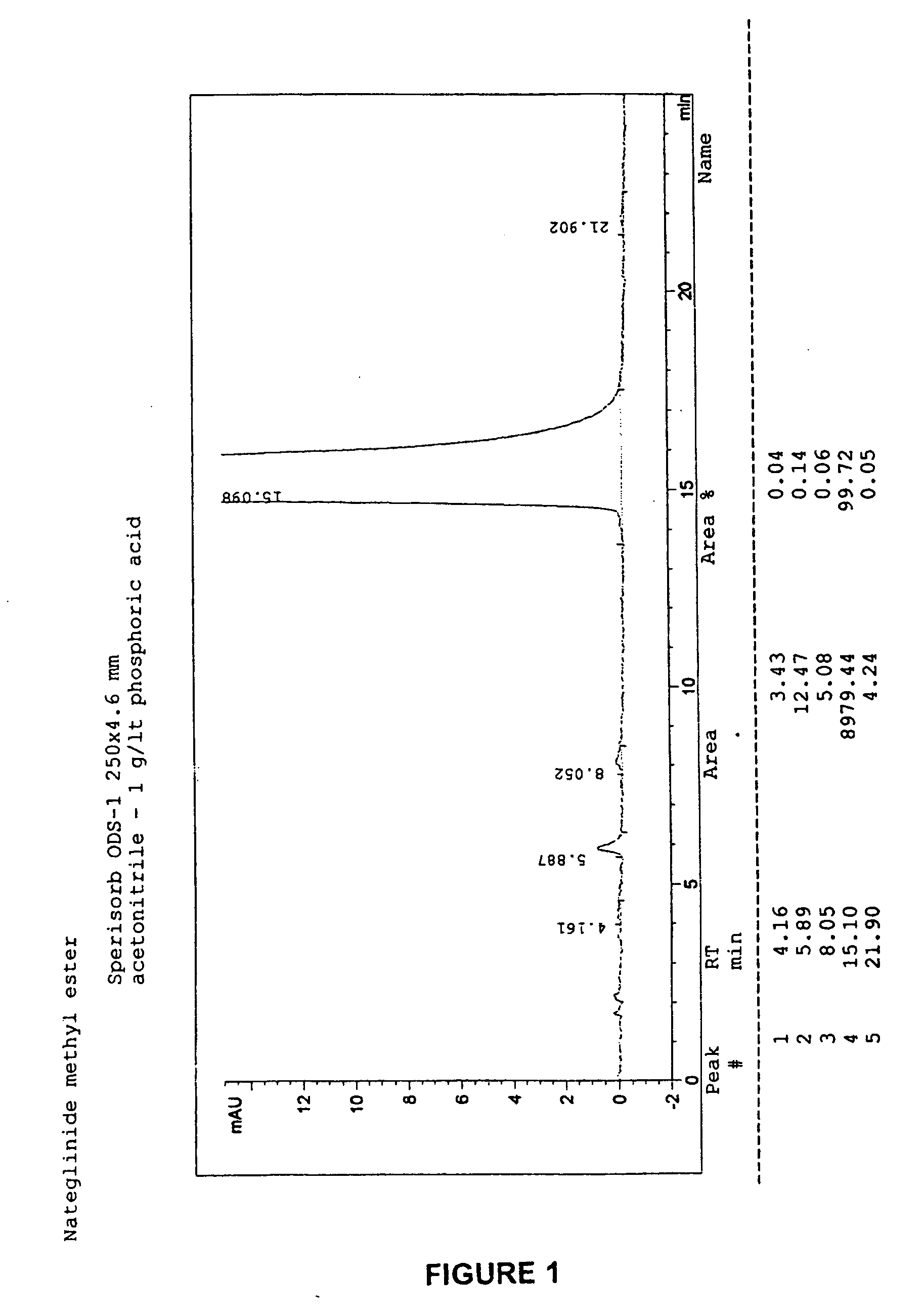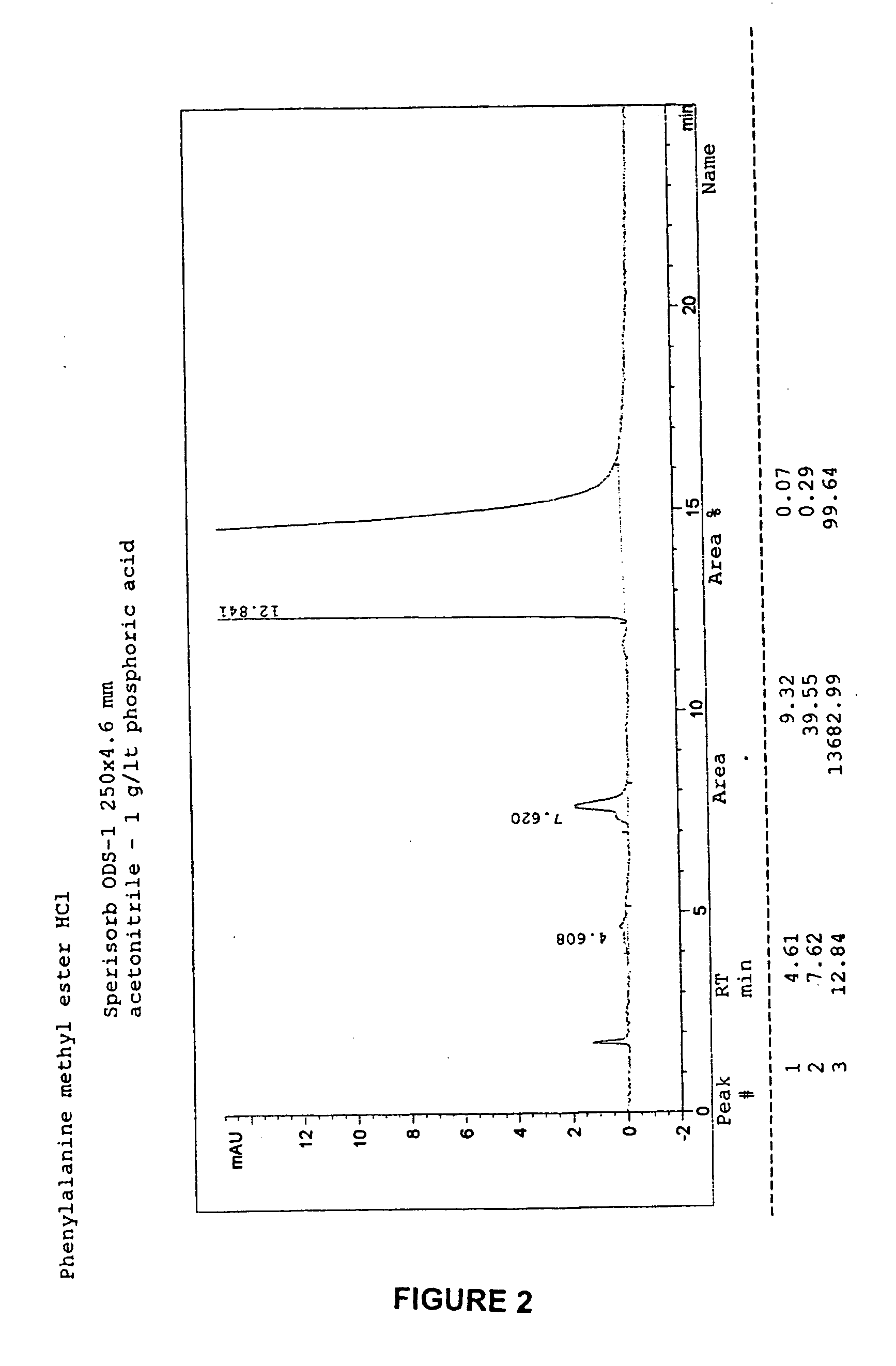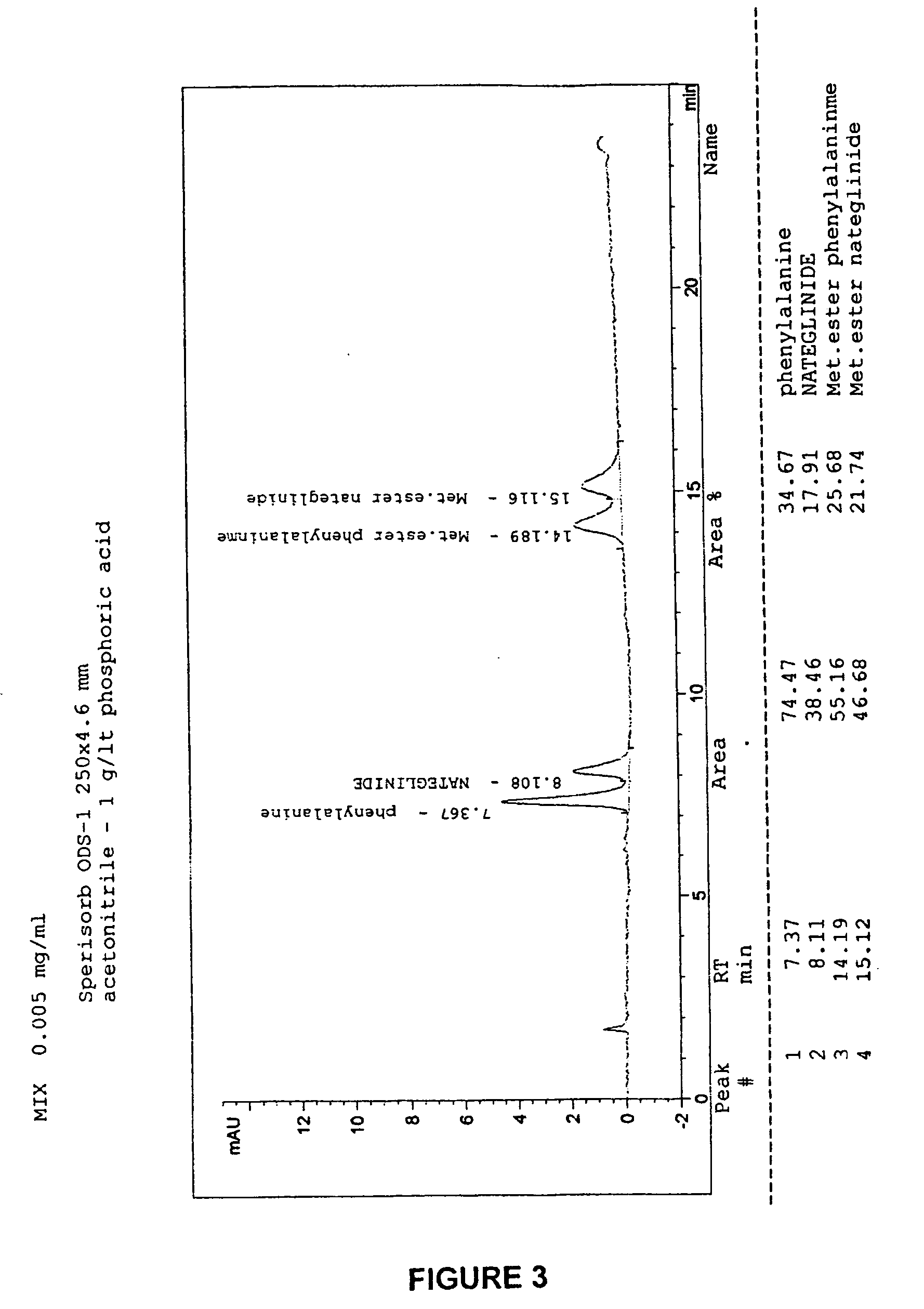Process for the preparation of nateglinide, preferably in B-form
a technology of nateglinide and b-form, which is applied in the field of process for the preparation of nateglinide, can solve the problems of increasing volume, affecting the quantitative recovery of product, and requiring a large amount of preparation tim
- Summary
- Abstract
- Description
- Claims
- Application Information
AI Technical Summary
Benefits of technology
Problems solved by technology
Method used
Image
Examples
example 1
[0050] Preparation of D-phenylalanine methyl ester hydrochloride.
[0051] 66.0 g (0.40 mol) of D-phenylalanine were suspended at room temperature in 400 ml of methanol in an anhydrous flask. The thus obtained white suspension was cooled to a temperature of 0±5° C., and then 56.0 ml of tionyl chloride were added drop wise in about 2 hours, maintaining the temperature in the range 0±5° C.
[0052] The temperature of the suspension thus obtained was brought up to 40±5° C., and maintained for 6 hours, then returned to room temperature.
[0053] The reaction mixture was stirred overnight at room temperature, and then concentrated under vacuum so as to remove most of the solvent; the residue was dissolved in 200 ml of toluene, and the thus obtained solution was concentrated under vacuum once more, until a residue able to be stirred was obtained.
[0054] To this residue 400 ml of acetone were added, and the thus obtained suspension was cooled to a temperature of 0±5° C. for 2 hours.
[0055] A sol...
example 2
[0056] Preparation of nateglinide according to the first embodiment of the invention (i.e. carrying out step i) in an organic solvent non-miscible with water and omitting optional step ia)).
[0057] 15.0 g (0.0881 mol) of trans 4-isopropylcyclohexancarboxylic acid were put into an anhydrous flask under nitrogen atmosphere together with 225 ml of toluene. Under stirring 10.9 g (0.108 mol) of triethylamine were then added, thus obtaining a thick suspension, which was cooled to 0±5° C. while maintaining under stirring.
[0058] To this suspension 11.7 g (0.0969 mol) of pivaloyl chloride were added drop wise, maintaining temperature in the range 0±5° C. The reaction mixture was made to react for 30 minutes at 0±5° C., and then temperature is brought up to 20±5° C. and maintained for 2 hours.
[0059] 10.9 g (0.108 mol) of triethylamine, and then 19.05 g (0.0881 mol) of D-phenylalanine methyl ester hydrochloride prepared as described above in Example 1 were added to the reaction mixture porti...
example 3
[0063] Preparation of nateglinide according to the first embodiment of the invention (i.e. carrying out step i) in an organic solvent non-miscible with water and omitting optional step ia)).
[0064] The procedure described above in Example 1 was repeated with the same reagents and under the same operative conditions, but diminishing the amount of toluene, from 225 to 150 ml, thus obtaining 24.2 g of dry end-product (yield=86.6%). A DSC analysis has been carried out on the dry product, revealing that a mixture of B-form and H-form had been obtained. The product was however of high chemical purity according to HPLC analysis. The product may thus be converted into the desired pure polymorphic form through methods described herein or known in the art.
PUM
| Property | Measurement | Unit |
|---|---|---|
| Temperature | aaaaa | aaaaa |
| Temperature | aaaaa | aaaaa |
| Temperature | aaaaa | aaaaa |
Abstract
Description
Claims
Application Information
 Login to View More
Login to View More - R&D
- Intellectual Property
- Life Sciences
- Materials
- Tech Scout
- Unparalleled Data Quality
- Higher Quality Content
- 60% Fewer Hallucinations
Browse by: Latest US Patents, China's latest patents, Technical Efficacy Thesaurus, Application Domain, Technology Topic, Popular Technical Reports.
© 2025 PatSnap. All rights reserved.Legal|Privacy policy|Modern Slavery Act Transparency Statement|Sitemap|About US| Contact US: help@patsnap.com



